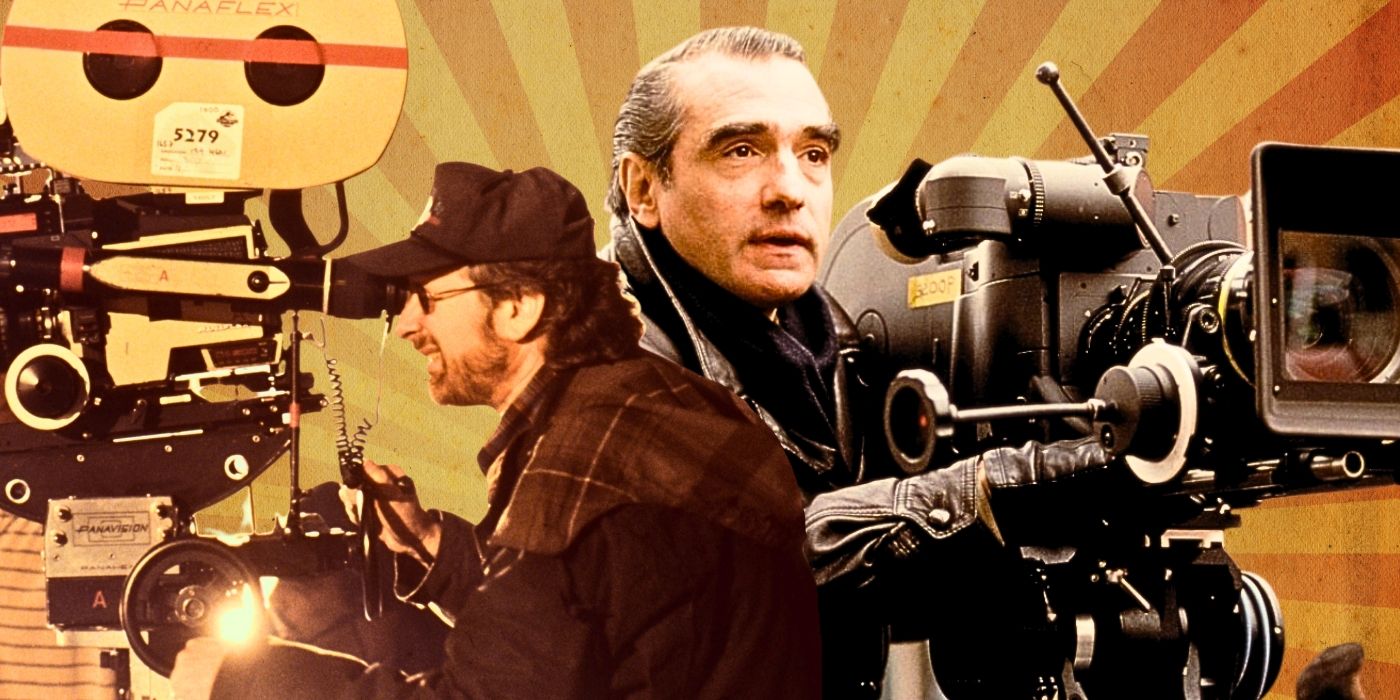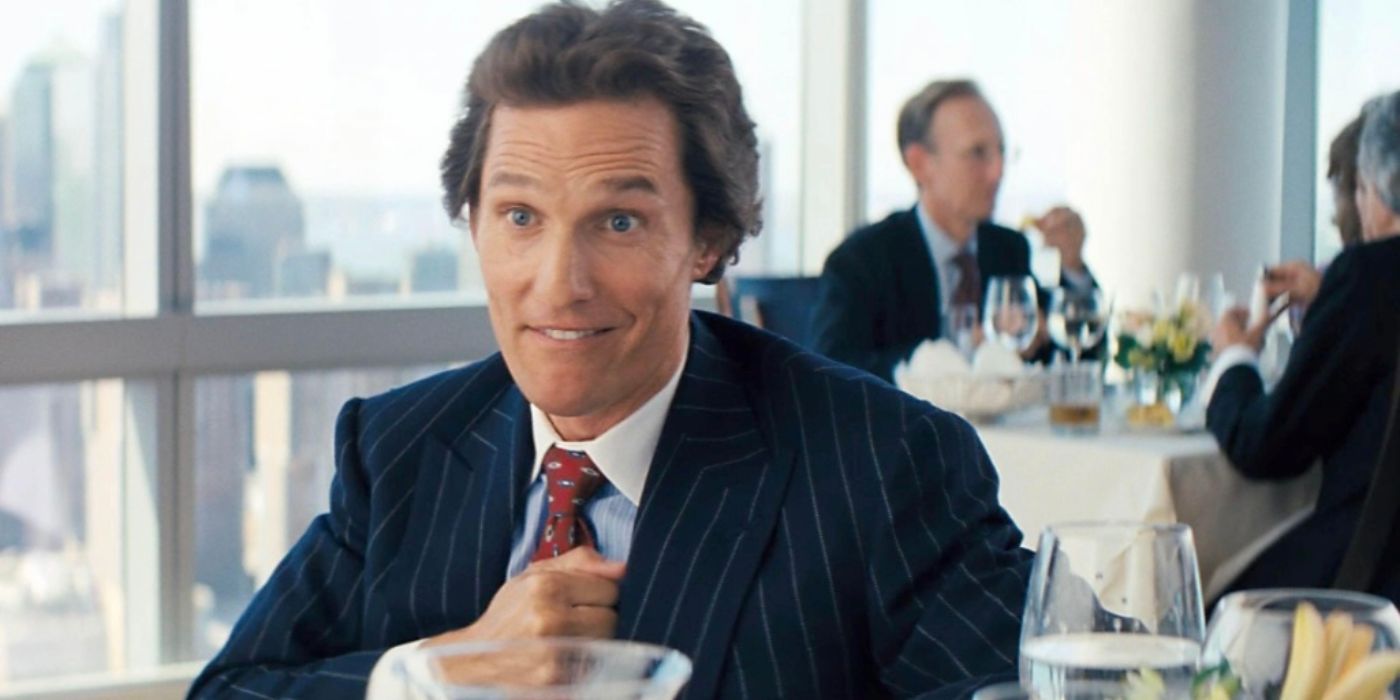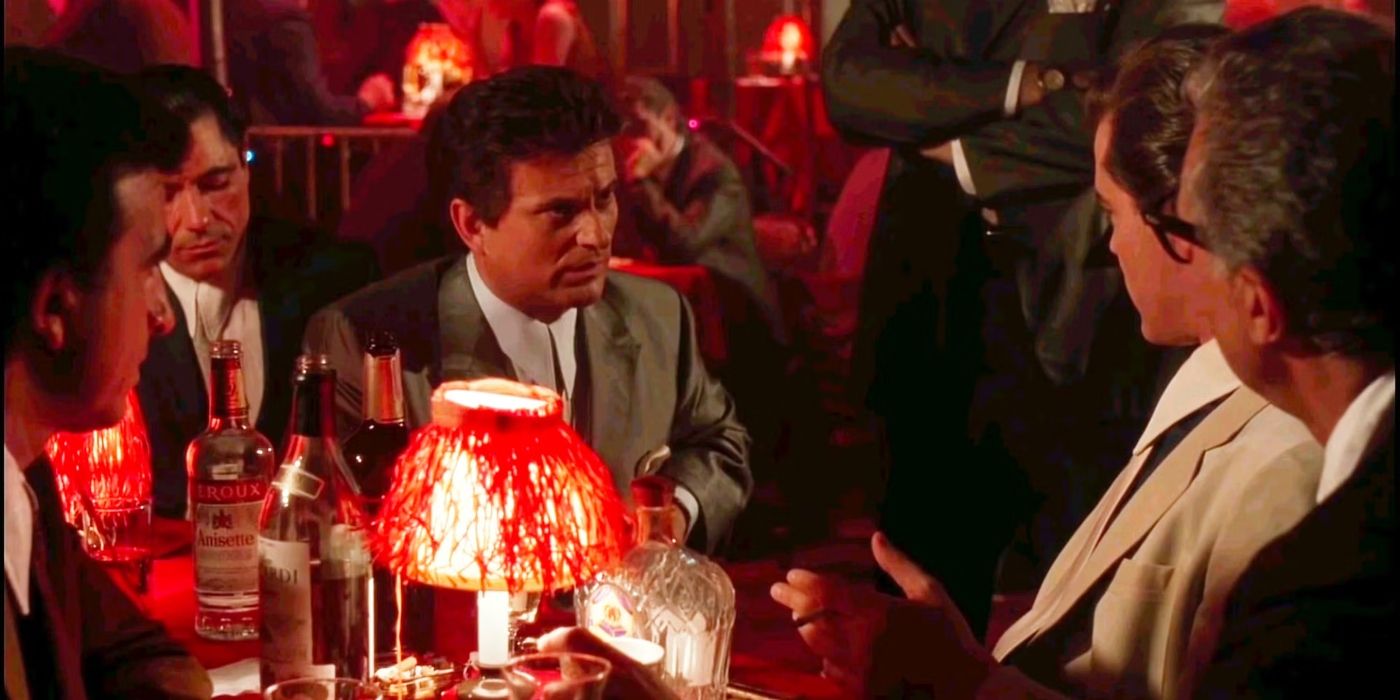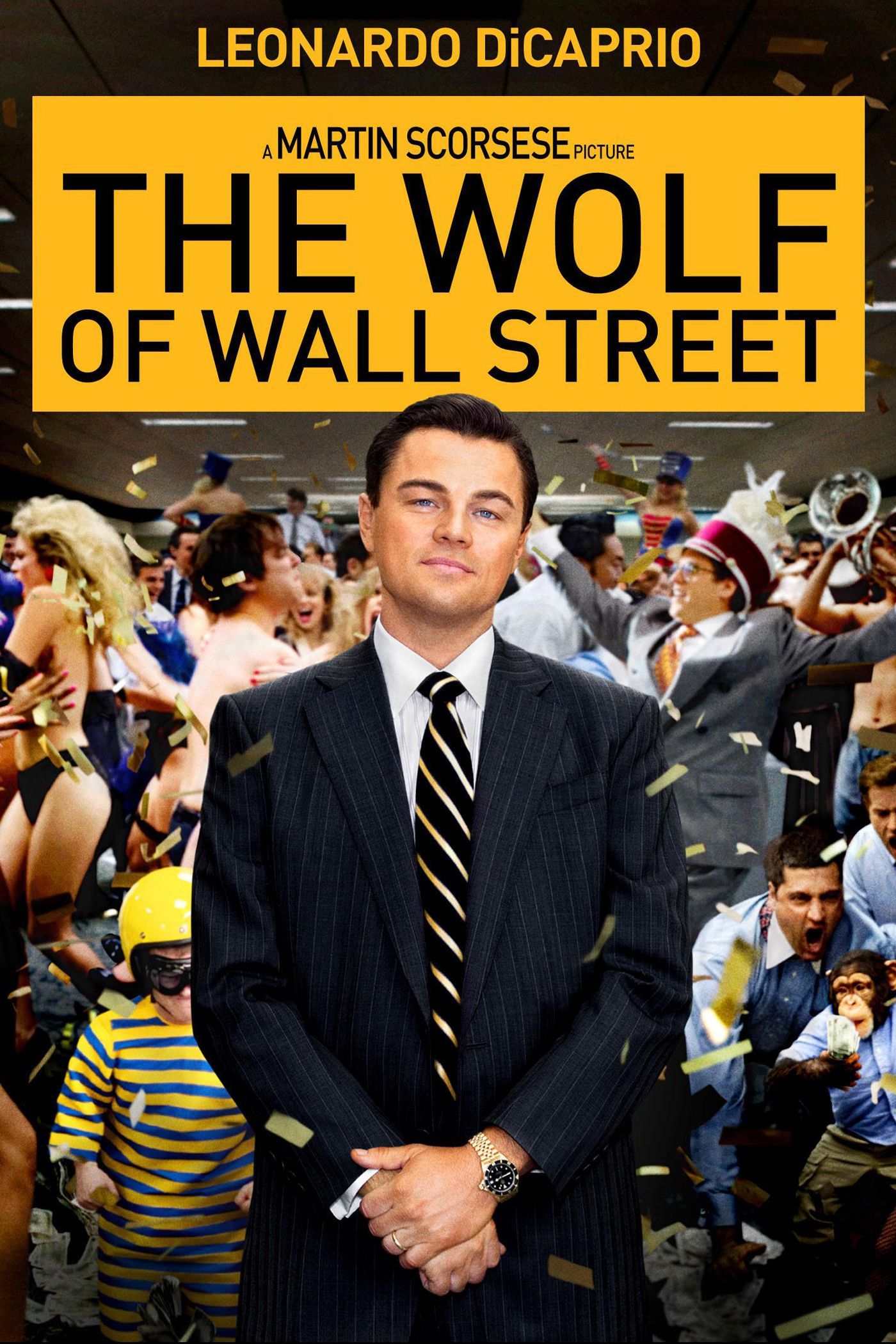
Throughout his legendary career, Martin Scorsese has never settled. Never short on ambition, Scorsese is a true maverick in the industry. Somehow, his audaciousness has increased since he hit his 70s, when most people as accomplished as him would maybe begin to settle down. In the last decade, the visionary filmmaker behind Goodfellas and Raging Bull continues to produce modern-day classics seemingly with ease in his later years.
The Wolf of Wall Street, released in 2013, showed Scorsese at the top of his game. Arguably Scorsese’s most rewatchable film to date, its drive and relentlessly visceral pace feel like it should’ve been made by a 35-year-old, and not someone in their early 70s. The Wolf of Wall Street is a collection of indelible moments and scenes, with none having a more seismic impact than the lunch scene between Leonardo DiCaprio and Matthew McConaughey, featuring an improvised gesture by the latter that crystallized Scorsese’s vision of capitalist greed and excess.
Martin Scorsese Has Not Lost His Speed in His Later Years
Scorsese’s spiritual late period run, starting with The Wolf of Wall Street through his recent film, Killers of the Flower Moon, engages with familiar text for the director, including faith and organized crime, portrayed in Silence and The Irishman, respectively. Scorsese’s sobering self-reflection in these films has made each of these films transcendent. Audiences can track the deconstruction of his frequent themes of salvation and punishment in real time. On the surface, The Wolf of Wall Street, the story of the corrupt stockbroker, Jordan Belfort (DiCaprio), is your typical Scorsese crime biopic, featuring a rags-to-riches narrative complemented by a narration track and a sweeping pop music soundtrack. With this film, based on the memoir by the real Belfort, Scorsese turns up the dial, presenting the debauchery of Belfort with an unflinching fervor designed to intoxicate the viewer until he punishes you for sympathizing with this band of white-collar outlaws. What makes it more haunting than any of his previous crime sagas is that, in the end, Belfort never truly pays for his crimes, because we as a society (and Scorsese to an extent), enable his actions.
Jordan Belfort, the hungry 22-year-old Reagan-era capitalist, gets his first break on Wall Street as a broker for the banking firm, L.F. Rothschild. His employer, Mark Hanna (McConaughey), takes him under his wing, telling him to ignore the other belligerent brokers and focus on the money. During his first day at work, Hanna invites Jordan out for lunch. While he’s on the clock and the sun’s still out, Hanna drinks a martini and snorts a line of cocaine, setting the tone for life on Wall Street. Hanna imparts wisdom to his apprentice, mostly consisting of drug and sexual habits. He insists that one must keep your body pushing at a steady pace or else they’ll lose sight of the main goal: taking money from the average working-class American and putting it into your pocket. It doesn’t take long for Jordan to adapt to Hanna’s lifestyle, as we immediately see him on a cocaine trip at a strip club. By the end of the film, Hanna’s drug intake will be “rookie numbers” compared to Jordan’s inhumane level of excess.
Matthew McConaughey’s Famous Humming Scene Was Improvised in ‘The Wolf of Wall Street’
In this scene, McConaughey does everything but light the screen on fire with his charisma and magnetic energy. This heat-check performance came at the peak of “McConaissance,” the actor’s creative rejuvenation period after years of waning credibility among the public, where he won an Oscar for Dallas Buyers Club, wowed the dance floor in Magic Mike, and led the Christopher Nolan space blockbuster, Interstellar. McConaughey’s making distinct choices and taking big swings in his performance, but nothing feels out of place. The signature attribute of this indelible supporting turn is the ceremonial chest bump that Hanna does impromptu at the start of the scene, accompanied by a humming beat that synchronizes with each bump. It serves as the national anthem of Wall Street — a pump-up jam for all brokers to get in the zone and earn money at all costs. As part of this mock initiation process, he instructs Jordan to perform the chest pump and tune. Hanna’s “pre-game” routine, which perfectly evokes the tone of The Wolf of Wall Street, stood alongside “alright, alright, alright” as McConaughey’s defining trait.

Related
Steven Spielberg Helped Martin Scorsese Direct This ‘The Wolf of Wall Street’ Scene
Steven Spielberg’s set visit lasted longer than expected!
McConuaghey’s humming “money chant” in The Wolf of Wall Street was improvised. He explained to The Independent that the chest bump was a ritual before filming. His co-star, DiCaprio, was intrigued, and he encouraged him to perform it on camera in the lunch scene. This is a technique that McConaughey had been using for years before The Wolf of Wall Street. In a video, the actor stated that it is a “relaxation tool,” citing that any musical beat helps him stay loose before the cameras roll. Many of the film’s most iconic moments, notably the “sell me this pen” exchange, were not in Terence Winter‘s script but were ad-libbed on the spot by DiCaprio and his fellow cast members. It helped that the film also starred Jonah Hill, who specialized in improv-heavy comedies under the Judd Apatow system.
How the Lunch Scene in ‘The Wolf of Wall Street’ Changed Martin Scorsese’s Vision
The lunch scene not only captured Matthew McConaughey at his rawest, but it also solidified Martin Scorsese’s greater vision for The Wolf of Wall Street. With its 3-hour runtime, the film stays true to its idea about bloated excess. However, Scorsese’s impeccable sense of pace and momentum prevents any dull moments in the narrative. Either way, Scorsese, as he reveals in this interview, cites that all the material in the script was overwhelming him, and he was uncertain how everything was going to connect thematically. From his perspective, filming the lunch scene, on the fourth day of shooting, was when it all “clicked in.”
The scintillating exchange between Jordan and Hanna represented the thesis of the film: dynamic speed. “That’s the movie,” Scorsese said. “It’s got to go fast, fast, fast. It has to be speed, and then, stop,” he continued, citing how the pace of this scene connects to the frantic behavioral climate of Wall Street. He recognized that, throughout the rest of the picture, a respective conversation “takes on its own speed” and “acceleration.” Between scenes and within scenes, the film works on contradicting levels of momentum. The constant tug and pull between quickly and methodically paced scenes complements Scorsese’s visceral camera movements and radio-dial soundtrack.
Crafting a film at every stage; casting, filming, and editing, often formulates spontaneously. Each element has a life of its own, and it’s up to the filmmaker to adapt to these ever-changing circumstances. Few directors have embraced and thrived off of improvisation and on-the-spot decision-making quite like Martin Scorsese. Scorsese is a cinematic genius because he understands the evocative component of the medium as well as anyone — never sacrificing the plot for emotional vibrancy. The lunch scene between Leonardo DiCaprio and Matthew McConaughey jolts the viewer immediately. This gave Scorsese a bright idea: what if every scene operated like this? As a result, The Wolf of Wall Street was born.
Martin Scorsese’s Inclination Toward Improvisation Led to Iconic Moments in His Filmography
In more ways than none, The Wolf of Wall Street represents the culmination of Martin Scorsese’s work. The film, nominated for five Academy Awards, signaled a new direction for Scorsese, as his late period run that continues through Killers of the Flower Moon demonstrates his poignant reflection on the banality of crime and excess. In an unfortunate similarity, The Wolf of Wall Street kicked off a trend of Scorsese being snubbed at the Oscars, as this film, Silence, The Irishman, and Flower Moon went a combined zero for 26 across four ceremonies. Although there is widespread reverence for his recent films, many still don’t grasp the profundity of his overarching messages.
Of course, there is nothing ordinary about the debauchery practiced by Jordan Belfort and his motley crew of corrupt stockbrokers, but their yuppie, white-collar presentation contrasts with the sleazy mafiosos of his past crime films. Right when we think that Scorsese is recklessly glorifying the actions of his characters (which is an ill-advised claim that has lingered with him for decades), he concludes The Wolf of Wall Street with a sobering coda. Belfort getting off scot-free and showing zero signs of reformation is not a gesture of condonation on Scorsese’s part, but rather, a biting decry against the capitalist greed of America. Worst of all, the ending outlines that most of us, like the audience watching the film, are destined to become entranced by the charm and alluring lifestyle of nefarious wolves like Belfort.
Additionally, The Wolf of Wall Street, with its darkly humorous roots and rambunctious subject, allowed Scorsese to utilize his inclination toward improvisation. Because his films often carry a cinema verite-like quality to them, capturing a specific milieu like organized crime, 19th century New York socialites in The Age of Innocence, or the eerie streets of Soho in After Hours, it makes sense that the director would allow his actors to play each scene spontaneously. In the ultimate act of affection from a son to a mother, Scorsese allowed his recurring cameo star, Catherine Scorsese, to improvise most of her lines in the deliciously entertaining late-night dinner scene in Goodfellas. He understands the power of improvising, as this scene is refreshingly unrehearsed and true to Italian-American life. Robert De Niro’s delivery of “You talkin’ to me?” while standing before a mirror in Taxi Driver lives in the annals of film history. However, it was not conceived by screenwriter Paul Schrader. Because production was falling behind schedule, De Niro had to think of a line quickly on his feet, and the rest is history. Considering that De Niro’s Travis Bickle has a blurred interpretation of reality, he would deliver lines with a certain spontaneity.
While Scorsese holds plenty of influence on a film set, he was no match for Jack Nicholson during the filming of The Departed. From his “I smell a rat” routine and chaotically pulling an unaccounted-for gun on his scene partner, Leonardo DiCaprio, Scorsese sat back and watched Nicholson chew the scenery with whatever popped into his mind. Scorsese’s films recognize that mobsters and criminal figures are generally psychologically unstable, and improvisational moments provide his actors with a chance to go off the cuff and surprise everyone on set. The most iconic scene in Goodfellas, and perhaps Scorsese’s filmography, the “How am I funny?” confrontation, arose from an anecdote Joe Pesci shared with Scorsese. Without pause, this exchange was added to the script and not told by any of the extras in the scene. There are countless examples of Scorsese striking gold by giving his actors space to experiment, like Matthew McConaughey in The Wolf of Wall Street, or to enhance the intensity of a moment, like Pesci and Nicholson.
The Wolf of Wall Street is available to watch on Paramount+ in the U.S.
Watch on Paramount+









